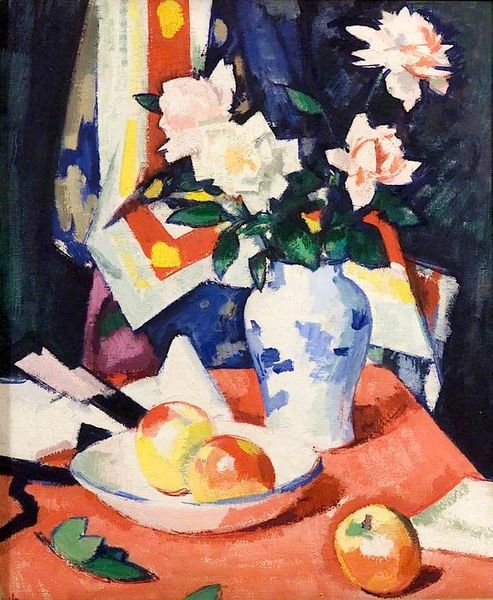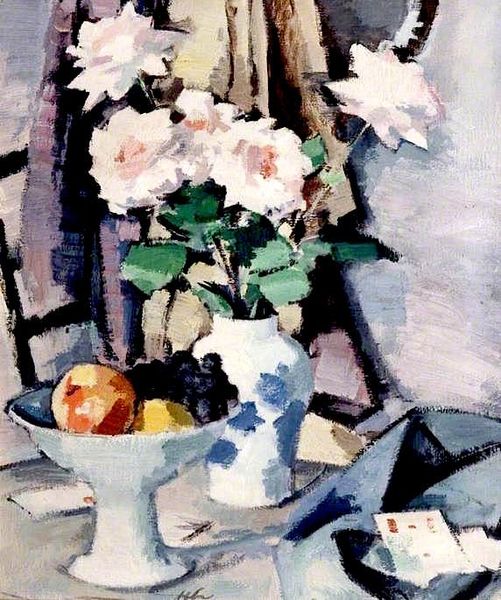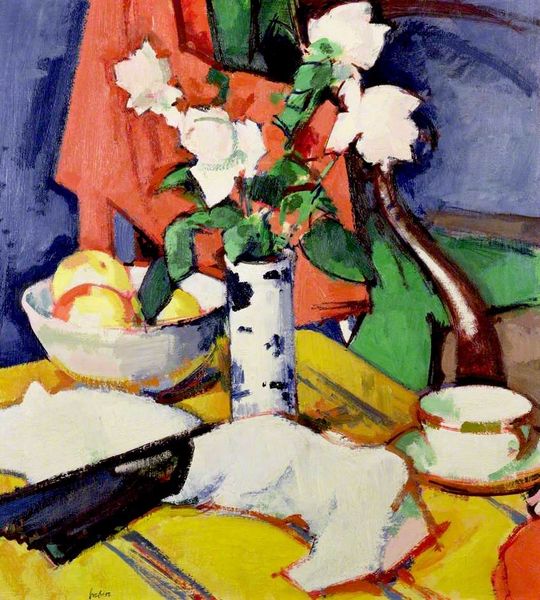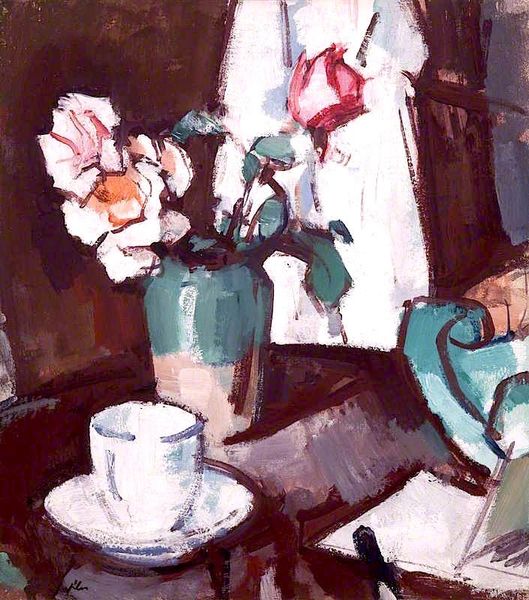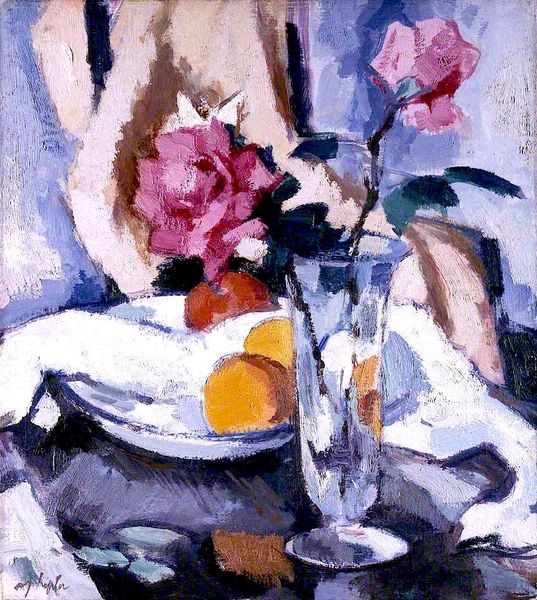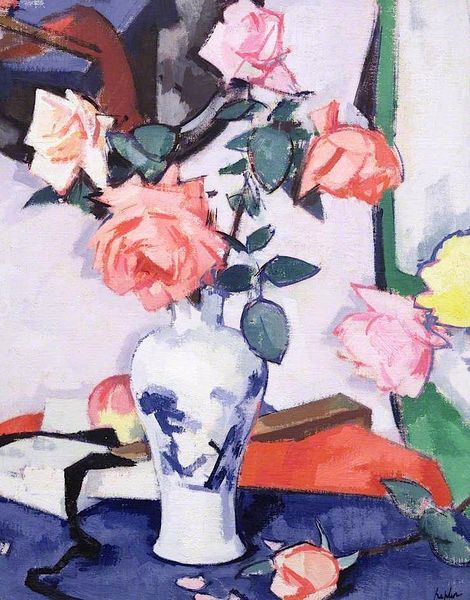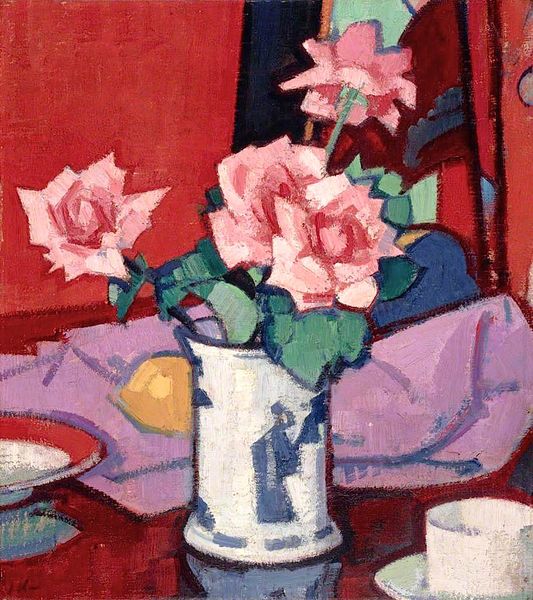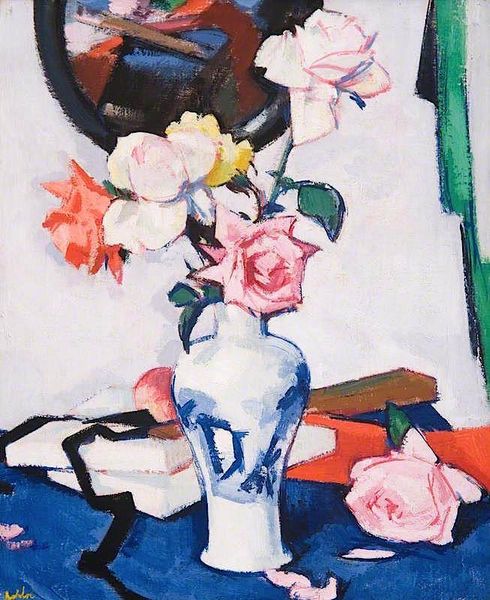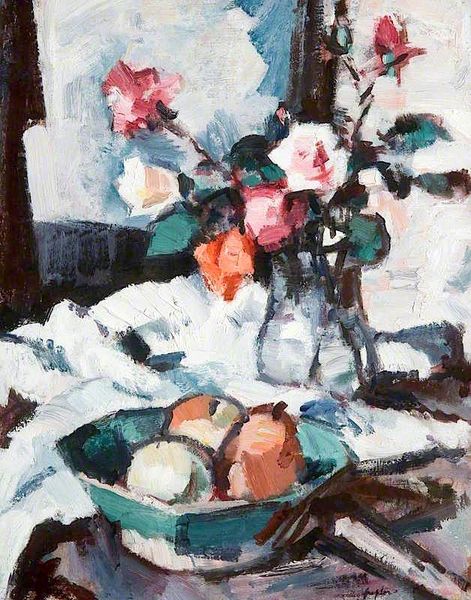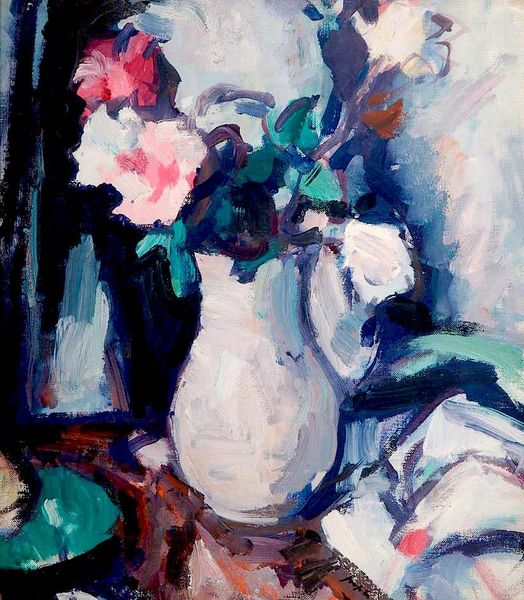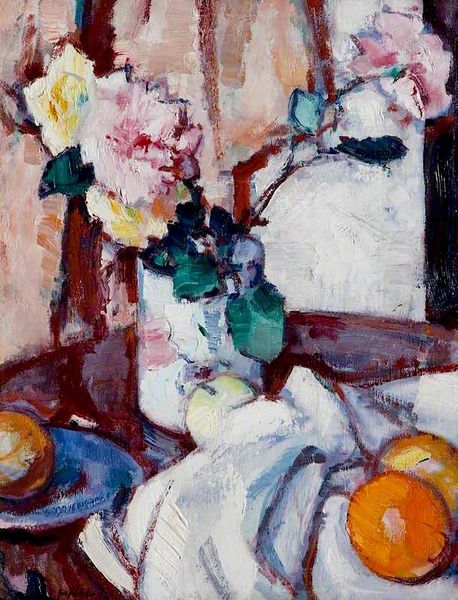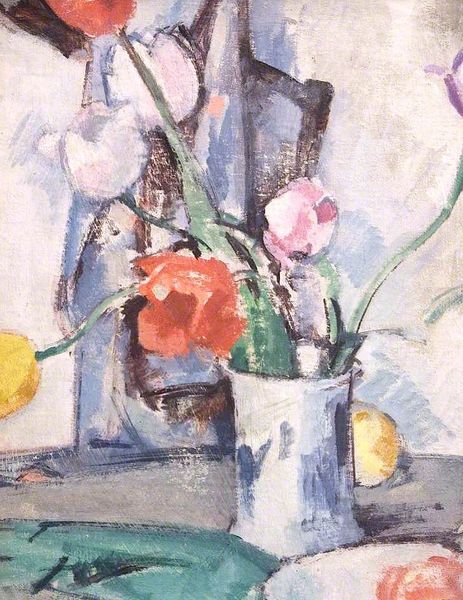
Copyright: Public domain
Curator: "Still Life, Red Roses" painted by Samuel Peploe in 1931. Peploe, a Scottish Colourist, renders a scene of domestic tranquility in oil on canvas. Editor: The immediate feeling I get is of hushed stillness—a paused moment, just after breakfast maybe. The muted color palette with those surprising bursts of pink makes it feel intimate. Curator: The painting certainly invites quiet contemplation. It's an exemplary piece demonstrating Peploe's mastery of simplifying forms and using color to create atmosphere. Consider how Post-Impressionism shaped his approach, taking inspiration from French painters while injecting Scottish sensibility. Editor: Right, that sense of interiority feels loaded. You have the teacup, suggesting domestic routine. However, flowers – especially roses – traditionally signify more than just decorative object. In the early 1930s, did still lifes serve as a subtle commentary of bourgeois values? Or even the precarity of beauty itself during economic depression and brewing European conflict? Curator: A valuable connection, that sense of unease. During this period, many artists worked with symbolism. Roses, for instance, held traditional associations of beauty and transience. By setting this subject inside domestic life, Peploe could very well be expressing views about social structure through what seems like decorative forms. The placement of the newspaper also gestures towards a wider world beyond the walls, Editor: That's interesting when considering gender, too. In an era when domestic roles of women were socially dictated, an artwork like this one prompts considering the female experience in these contexts. Does this still life celebrate or subtly critique the confinement within such boundaries? Or perhaps neither, existing in the comfortable space between critique and resignation. Curator: Perhaps Peploe aims to find aesthetic solace amid social flux. He paints a world observed and considered but does not demand explicit readings. It invites endless debate about purpose. Editor: It speaks to the multiple possibilities within art: how it captures intimate experience within a social tapestry, and encourages us to confront our roles within it.
Comments
No comments
Be the first to comment and join the conversation on the ultimate creative platform.

